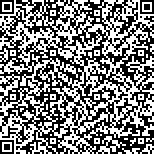下载中心
优秀审稿专家
优秀论文
相关链接
摘要

探地雷达用于地下考古目标和地下遗址分布的确定,为探地遥感应用开辟了广泛的应用前景.以浙江、绍兴印山大墓为地下探测特定目标,针对长江下游地区地下水位高、土壤潮湿使电磁波被地下水大量吸收而无法很好地深入地下,目标回波信号幅度小、信噪比低而影响探测结果,以冲击脉冲雷达和线性调频雷达两种方式对地下目标作用,以获取同一地下目标的各种电特征数据和地下目标同一物理特征的不同电参量表示,提高接收信号的信噪比,增加探测深度.并用回波能量相关方法辨别地下古代遗址的外形轮廓以确定目标位置.选择不同天线位置,对地下目标的反射特性参数做聚类处理.利用图像处理方法,使地下古墓廓线三维反演成像,并使位置误差最小.为古墓的无损探测提供了一种可行的方法.
Ground Penetrating Radar is an intact sounding technology in archaeological research field. It has constructive significance especially in positioning underground ancient relics or other remains and deciding the distribution area. The EM_waves can'not reach deep into the underground in the Yangtze down_river area because it is absorbed by plenty of moisture for the high underground water level and the wet earth. This fact results in the shorter penetrating altitude and less precision for the back_wave shorter altitude and lower S/N rate. For the stratum is a kind of chromatic dispersion media, the radar back_wave impulse become broader after it come across stratum. The back_wave can be identified correctly and the precise position can be stated which make it difficult to define the project exact location and profile in the latter data processing and image rebuilding process. This article presents a new method that is encoded by both impulse signal and FMCW radar signal to positioning the underground ancient relics especially the vault tombs under the special geographic conditions like the Yangtze river. It increased the signal S/N rate by the vertical time related technology to enhance the penetrating precision. The profile of the underground tombs is determined by the way of back_wave energy related method to indentify the project location. The wave_transmitting antenna is located at different places and the reflection character parameters of the project are processed in collective grouping way. Then using image processing technique the underground relics is reversely_deducted in 3D and the error of the position is deduced to the minimum.

